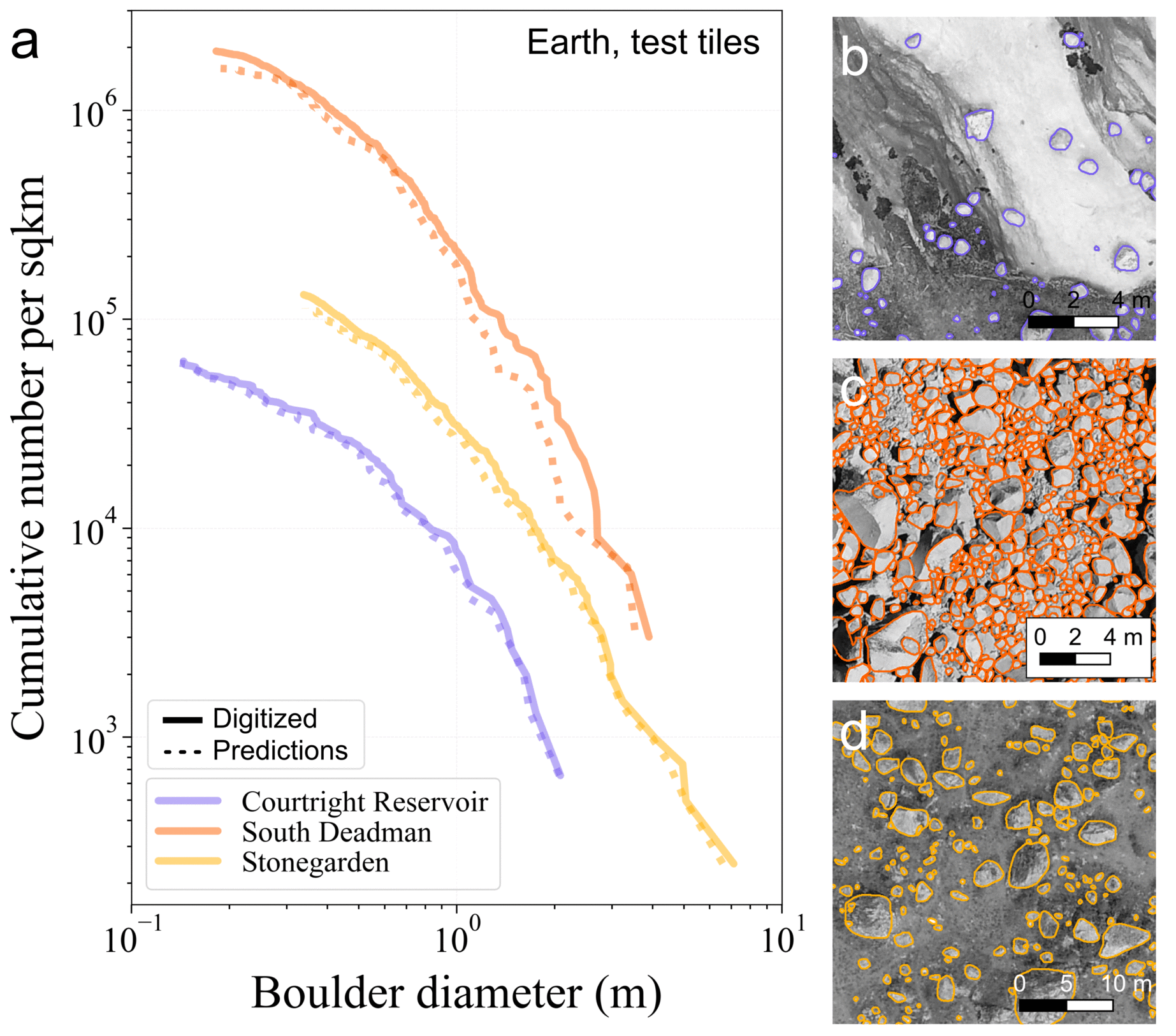Current Projects
BOULDERING (Oct 2021 – Oct 2024)
A Deep Learning approach for boulder detection –The key to understand planetary surfaces evolution and their crater statistics-based ages
Craters are very common surface features on many solid planets and moons. During an impact, rock fragments ejected from the crater cavity could be deposited elsewhere on the surface, where they could potentially form secondary craters. Boulders are the only remnants of these ejected materials. Their size and shape, as well as the terrain on which they are found, provide important insight into the ejection mechanisms. Funded by the Marie Skłodowska-Curie Actions programme, the BOULDERING project plans to use high-resolution imaging and deep learning to further investigate the size and shape distributions of boulder populations. Project results could boost our understanding of the planetary surface evolution.

Caption: Example of automatic detection of boulders with the BoulderNet algorithm (see BOULDERING) at terrestrial locations.
Speciation Clock (Mar 2023 – Jun 2023)
Sterile or fertile pollen?
Summary
FOCUS (xxxx 2020 – xxxx 2021)
Summary
